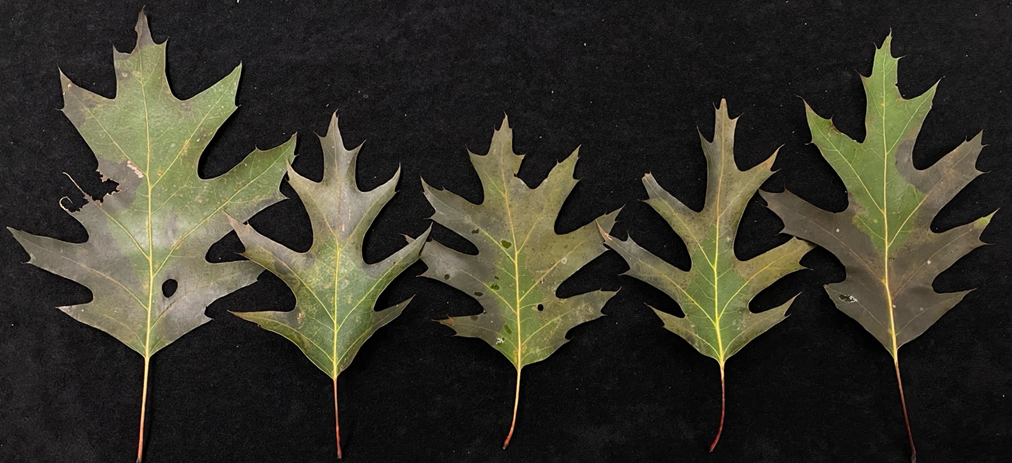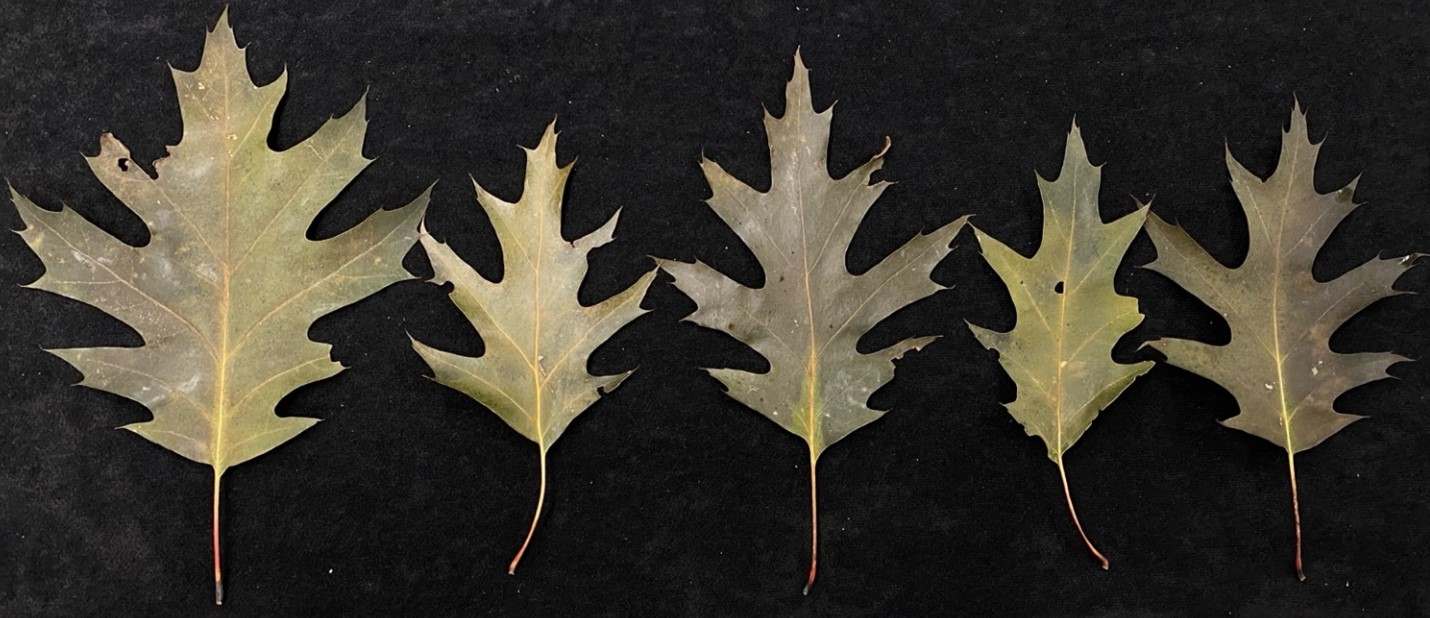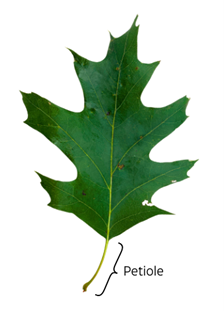New MSU research puts oak wilt testing within reach of homeowners
Oak wilt can now be diagnosed using leaf petiole samples, saving time and money.

Oak wilt is a deadly fungal disease affecting oaks across Michigan, and it is notoriously difficult to control due to its two methods of spread. The first is overland transmission, where sap beetles carrying oak wilt spores infect fresh wounds on oak trees. This is why it is critical to avoid pruning oaks between April and July, and to immediately seal any accidental wounds during this time to prevent beetle access. The second transmission method is through shared roots between infected and healthy oaks. This underground spread is responsible for the expanding clusters of dead and dying trees if left untreated. Controlling oak wilt requires testing to confirm the disease and following established protocols to prevent further infections.
The symptoms of oak wilt are hard to miss, particularly in red oaks. Leaves, most often at the top of the tree, begin to dry out and discolor, often showing browning or bronzing at the leaf tips. Rapid leaf loss follows, and red oaks typically die within weeks after symptoms appear.
Laboratory testing is important to confirm that a tree is dying from oak wilt, as this helps protect surrounding trees. Other pests (environmental stressors) and diseases can cause similar symptoms, but effective control of oak wilt relies on proven protocols developed over the past decade to save as many trees as possible in your landscape or forest. Until recently, if oak wilt was suspected, you needed to either collect a branch or bole sample, often requiring the assistance of an arborist due to the height of the nearest branches. Bole sampling, which involves removing sapwood from the trunk, is destructive to the tree and only performed when the tree is not expected to survive. A recent research development at Michigan State University, led by Karandeep Chahal, PhD, has changed all that. It is now possible to confirm oak wilt using leaf samples. These samples should be collected from directly beneath the symptomatic tree and should be as fresh as possible. This breakthrough saves both time and money, with the potential to help preserve many of our beautiful oak trees.
If you suspect your tree has oak wilt, follow the Michigan State University Plant and Pest Diagnostics guidelines below for accurate oak wilt diagnosis. You can also contact the laboratory directly for more information. Visit their website at www.pestid.msu.edu.
Leaf sampling guidelines
Submitting fresh and recently fallen leaves, instead of branch sections or bole samples, is a non-destructive approach that preserves tree integrity while maintaining diagnostic accuracy.
- Keep your sampling within 20 feet of the suspect tree, as leaves can be moved by environmental factors.
- Collect 15-20 leaves with attached petioles that exhibit a mix of tan and green on the leaf blade.
- Include leaves displaying a range of wilt symptoms.
- Select leaves that feel fresh and have recently fallen from the tree.
- Avoid submitting completely brown or dry leaves. Symptoms should cover 1-50% of the leaf area.
- Do not remove the petioles from the leaves.
- Place the leaves in a plastic resealable bag to preserve their natural moisture.
- Do not add wet paper towels to the bag, as added moisture promotes mold growth.
- Do not wrap leaves with dry paper, as this will remove their natural moisture.
- Place the samples in a box instead of an envelope.
- Fill out a general sample submission form.
- Ship the samples using overnight delivery.


What is a petiole?
The petiole is basically the stem of the leaf. The instructions above state that the petiole should be left on the leaf. This is critical for the laboratory process.

What to do about a positive diagnosis
If you have sent your leaves in and receive a positive diagnosis, it is important to take action to curtail the spread of the disease. A key first step is to consult an arborist trained in oak wilt management. The Michigan Oak Wilt Coalition maintains a list of qualified arborists who are trained to handle oak wilt issues. You can find an arborist in your area by visiting the Michigan Oak Wilt website.
A trained arborist will assess whether trenching needs to be done to disrupt shared roots with other oaks, advise on the timing and method for tree removal, and provide guidance on how to manage the wood from the diseased tree(s). Oak-wilt infected wood must be burned, buried, chipped on-site or tarped for a year until completely dried and de-barked. An arborist may also recommend treating nearby healthy oaks with a fungicide to prevent further spread once trenches have been cut.
Another simple but useful step is to report your infection site using the Michigan Oak Wilt Viewer Tool. This interactive website enables the Michigan Department of Natural Resources (DNR) to track active oak wilt infection sites. The DNR’s forest health professionals collaborate with state and federal agencies, as well as universities, to prevent, evaluate and manage the occurrence and impacts of this disease.
Learn more about oak wilt by visiting the Michigan Oak Wilt Coalition website. Click on Research/Resources in the navigation bar to find articles and studies.
This work is supported by the Crop Protection and Pest Management Program [grant no 2024-70006-43569] from the USDA National Institute of Food and Agriculture. Any opinions, findings, conclusions, or recommendations expressed in this publication are those of the author(s) and do not necessarily reflect the view of the U.S. Department of Agriculture.



 Print
Print Email
Email